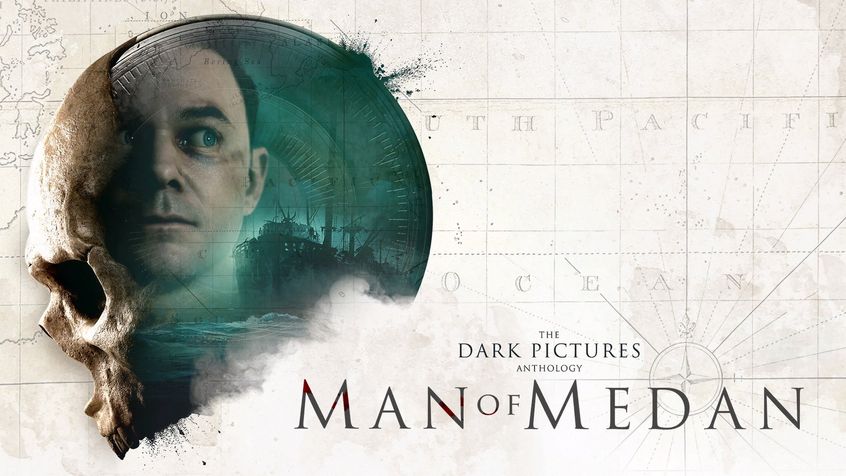Dark Pictures Anthology: Man Of Medan
This is going to be completely unsurprising to anyone who knows anything about me, but I am an unabashed fan of cheesy B-movies. I love the corniness of them, how over the top and dramatic they are about everything, and how the stories make the barest minimum of sense to get from point A to point B. They are glorious and fun, and I love them.
It should be totally unsurprising, then, that when presented with the opportunity to play a game that’s more or less the equivalent of a B-movie, I’d jump at the chance. I was excited for this one, and in many ways, it did not disappoint.
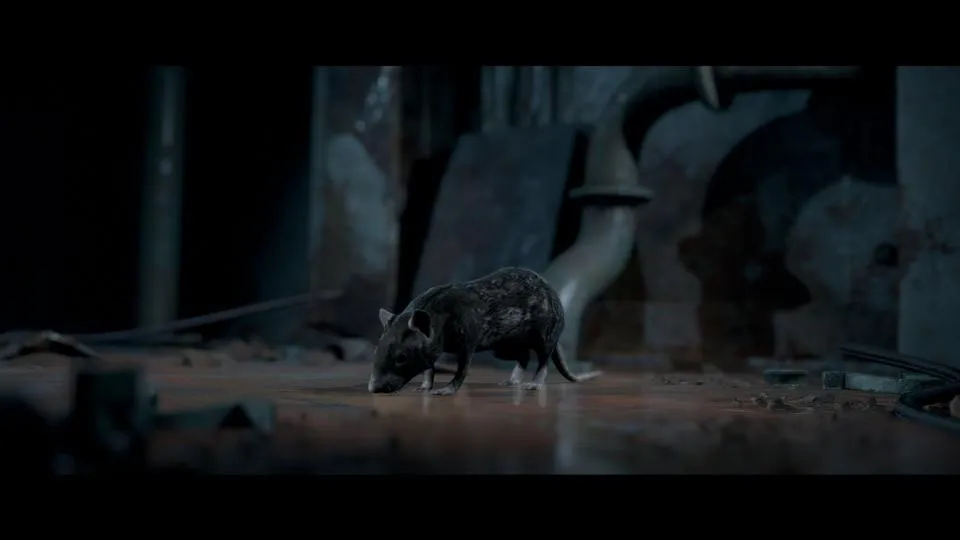 It’s
not a B-movie without some lovingly shot b-roll of rats and other spooky
critters.
It’s
not a B-movie without some lovingly shot b-roll of rats and other spooky
critters.
Man of Medan is a narrative, choose-your-own adventure style horror story. It follows a cast of eminently dislikeable characters as they desecrate an underwater archaeological site, pick fights with locals, and get themselves taken hostage on a spooky ghost ship. It’s like an inverse Scooby Doo, where the mystery is already solved and I just want to see how the group fails to get back to the Mystery Machine, or like a twisted Dead by Daylight, where I am rooting for the killer because he just feels morally justified in all this.
A narrative version of Dead by Daylight, then.
The game is a narrative fiction game, punctuated by occasional movement and quicktime events that help govern the course of the story. The game, like all games in its genre, repeatedly emphasises the importance of player choice in shaping the narrative, though how true that is is a question worth exploring further.
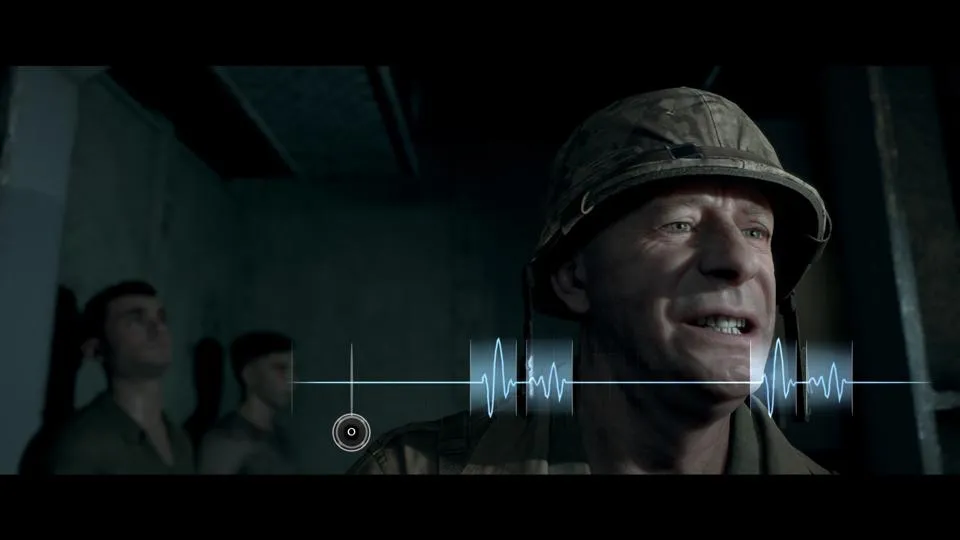 I’m
not sure what this quicktime event is supposed to be. Am I controlling my
heartbeat? My panic? Who knows!
I’m
not sure what this quicktime event is supposed to be. Am I controlling my
heartbeat? My panic? Who knows!
One issue many narrative-based games - such as the previously reviewed Cosmic Wheel Sisterhood - face is the inability to account for the multitude of player styles, interpretations, and choices. Man of Medan, with its more pre-defined characters, does a better job of navigating this, though it still occasionally falls trap to the writers’ interpretations being different from the players’. At several points, I was faced with a choice without understanding what my choice actually meant. For instance, when a one of my characters was being threatened by an antagonist, I faced a decision to “divert or distract.” I had no idea what either of these choices entailed, just that something would happen with either that was beyond my knowledge of control. I picked one, got an action I didn’t expect, and dealt with the consequences of a choice that never really felt like my own. While these ambiguous choices do exist throughout, they are scattered enough that the process of telling the story and building the characters does feel like the player’s own.
There are limits to how much the characters could be built, however. Each character brings with them certain pre-defined traits. Some might be witty, others confident, basic traits that inform who they are before they begin this adventure. How these characters respond to the world around them shapes their personalities and relationships with others into something more in alignment with how the player is playing them. These decisions, though, exist within the context of that pre-existing character, and the game’s description of these responses is sometimes in incredible misalignment with the player’s expectations. When the ship’s captain, Fliss, rebuffs one character’s sexual harassment, for example, the choice to do so is described as “guarded” and “deceitful,” terms that make it clear how the devs expected or perhaps hoped the character would respond to sexual harassment. Her eventual decision to save her own life rather than trying to save one of the people who got her into this mess into the first place is described as “selfish.” How the player and the writers viewed these decisions can vary dramatically, and lead to odd gameplay and narrative outcomes.
This sense that the game is less a game about choices and more a well-veiled set of trolley tracks is not helped by the game’s constant insistence that it is a game about narrative choice, and its emphasis that player choices matter. However, that emphasis is coupled with a condemnation if the player lets any of the protagonists die, and a constant judgement of how they’re doing. It creates the idea that this is less a game about player choice and players guiding the story than it is a challenge, asking player to understand the correct path to take while plunging blindly into the abyss.
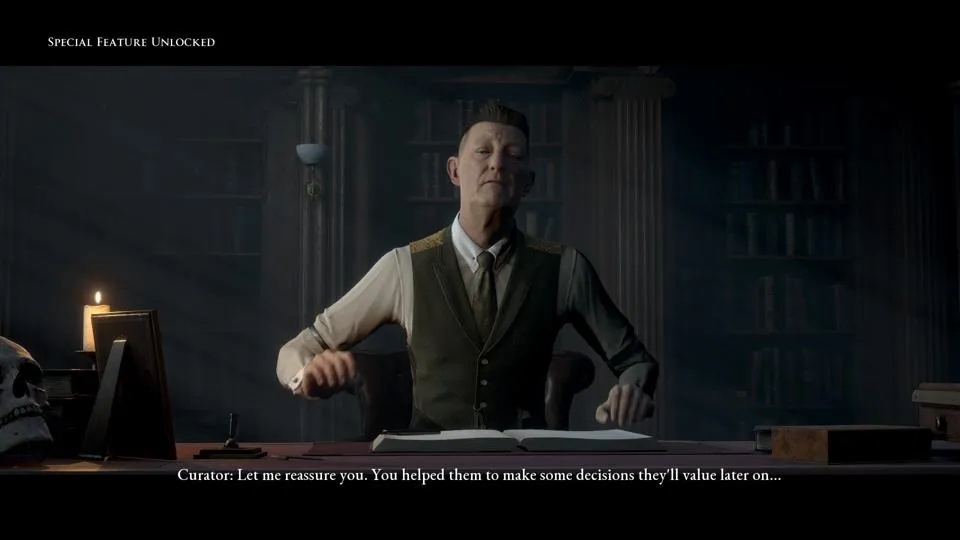 Did
I, though? Did I?
Did
I, though? Did I?
The idea that this is a game about narrative choice and the consequences of decision-making was also not helped by the inclusion of quicktime events that fundamentally reshaped the course of the story. I am pretty terrible at quicktime events as a rule, fumbling my button presses or missing my cue entirely. Man of Medan’s design of which mouse button to press, or its inability to allow me to remap hotkeys didn’t help either. Hilariously, one quicktime button was also mapped to a movement button, meaning every time the prompt for it came up, my character would wander off. At multiple points, though, fundamental plot beats were determined solely by whether or not I could hit the correct button in time. When I failed, and reached a bad outcome, and got judged for it, the experience left me with a sour taste in my mouth. While I recognise that the circumstances that led to that quicktime event may have been the result of decisions made long before, it didn’t change that, in that moment, I felt cheated out of my own agency. A game of narrative became replaced with a game of button mashing, which wasn’t what I signed up for.
In general, the conseequences of my choices weren’t always clear, to the point where events would happen that I could tell were the consequence of something I did, but I had no idea what I did wrong or what I could have done differently. This became especially egregious when one of my characters died off-screen, and I had no idea why or how.
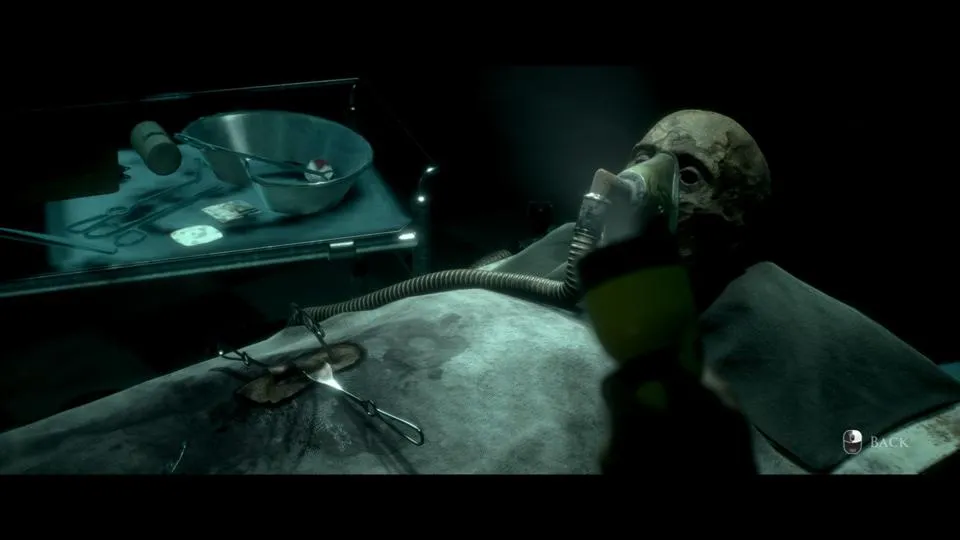 That
is not good surgical tool maintenance. I think they’re going to need some new
tools after this.
That
is not good surgical tool maintenance. I think they’re going to need some new
tools after this.
All of this might suggest that Man of Medan is not a good game, that, in addition to recreating a B-movie plot, it is also a b-game at best. In some ways, that’s a valid reading, but equally, I can’t help but admit that I had a grand time. Once I recognised what the game was doing and the story that it was going to tell, I strapped myself in to just have a good time with the ride. I was willing to look past the terrible movement controls and the quicktime events that cheated me out of my own agency if it meant I could enjoy a good, dumb horror story. For all its flaws, Man of Medan does offer exactly that experience. It’s not here to make the player think deeply about the universe and their role within it, nor the consequences of the actions we take. It is ultimately a fun B-movie adapted into a game.
As a narrative game, there are better examples out there. The constant imposition of weird gameplay elements and choices that don’t align with the player’s understanding do get grating after a while. However, Man of Medan is still a doofy, fun game that never takes itself or the story it’s telling too seriously. It’s a narrative game for fans of 80s B-movies, a narrative for the people who play Dead by Daylight for the vibes, and you know what? That’s me to a t.
Oh, and I killed Conrad, and I’m not sorry.
Developer: Supermassive Games
Genre: Interactive Fiction, Horror
Year: 2019
Country: United Kingdom
Language: English
Play Time: 4-5 Hours
Youtube: https://youtu.be/IszWuJZcK0A
